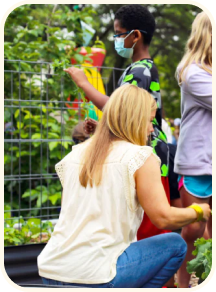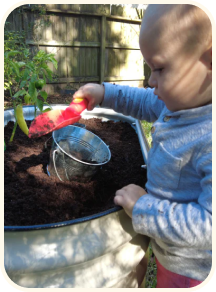The Joy of Fragrant Gardens
Smell is one of the most salient of the five senses that continues to dominate the modern consumer industry. Perfumers have for centuries tried to distill the complex scents of flowers into bottles; the sommelier relies on his acute sense of smell to pass judgment on wines. Though smell is often overlooked when designing a garden, a pleasant floral aroma adds a soothing layer that can enhance the sensory experience. This summer, consider creating a fragrant garden, which can imbue your garden with delightful scents even on the gloomiest of days.
What is a Fragrant Garden?
A fragrant garden is one type of themed garden that focuses on scent, with secondary considerations based on color and texture. When strategically placed in different parts of the yard, it conveys a symphony of smells that can be observed from an open window or a garden walkway.
Planning your Fragrant Garden
While winter brings a period of stark isolation, it doesn’t mean that you should forgo scent. Just like taste is a crucial element in vegetables and fruits, scent is an important aspect of flowers – both are considered remedies for the soul. Vego Garden’s Elevated Rolling Planter allows you to transport delicate plants inside to preserve their beauty and scent. To ensure a fragrant garden all season, you need to select plants that will flower in succession, which will produce a period of continuous bloom from spring to fall.
Planning is crucial before starting your garden. Place plants near walkways, patios, and other outdoor sitting areas to maximize fragrance. Think about what types of plants you want to grow according to your personal fragrance preferences. For optimal results, select a site that is located in a sunny location and has good drainage. Enclosed spaces instead of the open yard will help concentrate the fragrance, allowing you to catch a waft from an open window. You do not need a large space – even a couple of carefully arranged pairings of fragrant flowers can make a significant difference in your garden.
Choose a site that is:
- Near well-traveled paths
- Near a wall or patio
- Has good drainage properties (raised garden beds recommended)
Types of Flowers for a Fragrant Garden

Combine herbs, vines, and shrubs to create an intoxicating blend in your garden. Depending on your personal preferences and growing zone, you may want to consider these types of flowers. Trailing wisteria and lush magnolias are classic southern favorites that conjure an alluring image of the South, with its old plantation houses and slender Cypress trees. Roses and jasmine, with their elegant trailing vines, are popular in cottage garden settings.
1. Choosing Suitable Plants
Select plants that are compatible with the soil, shade, and sun requirements of your location. Remember to incorporate early season perennials with late-blooming flowers if you want to experience your garden from frost to frost. Below are a few aromatic plants you can select for your garden.
Shrubs
- Lilac
- Philadelphus ‘Belle Etoile’ (Mock Orange)
- Gardenia
- Camellia
- Sweetbay Magnolia
- Winter Honeysuckle
- Clethra
Perennial Flowers
- Chocolate Cosmos
- Lavender
- Lemon Lily
- Lily of the Valley
- Hyacinth
- Phlox
Herbs
- Lavender
- Rosemary
- Mint
- Thyme
2. Grow Lilacs for a Fragrant Spring

Renowned as spring’s most fragrant flowers, lilacs are the quintessential flowers for spring. Although their billowy violet blooms are ephemeral, appearing only two weeks, there are different varieties with different bloom times you can select to ensure continuous bloom. ‘Beauty of Moscow’, ‘Angel White’, and ‘Josee’ are eye-catching varieties with enchanting blossoms and a fragrant aroma. Easy to maintain once they become established, lilacs bring a peaceful atmosphere to any garden.
While lilacs can be classified as either trees or bushes, most are sold as bushes. The more compact varieties, pruned into loose hedges, are often seen adorning borders. They can also be incorporated into the landscape as a structural backdrop. In English country gardens, it is common to see clematis interspersed with lilacs, its sprawling vines intertwining with the branches of the lilac tree as its flowers fade.
3. Consider Fragrant Rose Varieties

While the smell of other florals may be the subject of debate, the delightful scent of roses is universal – any fragrant garden would be amiss without their lavish blossoms. Various descriptors such as sweet, spicy, and citrusy have been used to describe the scents derived from roses. English garden roses, which trace their heritage to antique cultivars, are highly fragrant. With their massive blooms and pastel colors, David Austin roses are coveted for their fragrance, many of which carry the distinct scent of myrrh. Used throughout history as incense and perfume, myrrh has been linked to divinity. ‘The Ancient Mariner’ is a poetically named David Austin rose bearing frilly mases of many-petalled blooms that carries with it a heady myrrh scent.
4. Incorporate Native Flowers into your Garden
A prairie garden is a themed garden that incorporates native wildflowers with sweeping ornamental grasses. At once delicate and rustic, a prairie garden presents multifaceted layers of textures, heights and variations. With the addition of native plants, which require less irrigation, fertilizer, and pesticides than conventional gardens, they become less maintenance heavy. They can also attract beneficial pollinators and wildlife to the garden, helping you create an intricate ecosystem in your backyard.
To recreate the unique, diverse aesthetic of a prairie garden, look for the Cascading Raised Bed, a tiered raised garden bed designed to offer an elegant configuration for plants of varying lengths. Some sweet-smelling native flowers include clethra, which carries a honey-like fragrance; bee balm, with a citrusy smell; and various azaleas.
5. Add Night-Scented Plants to Enhance the Evening Atmosphere
A moonlit garden, alight with luminous flowers that glow after the dark, was once popular during the Victorian era, an era that evokes a hauntingly melancholy evocative of moonlight. However, the origins of moonlit gardens can be traced back to 17th India, where ancient flowering fruit trees, shimmering pools, and shimmering flowers once adorned the gardens of royalty. Like its name suggests, moonlit gardens utilize night-scented flowers designed to reflect the pale silver of moonlight. Jasmine, moonflower, and phlox are popular choices that can be interwoven into the garden to create a silvery tapestry.





























Leave a comment